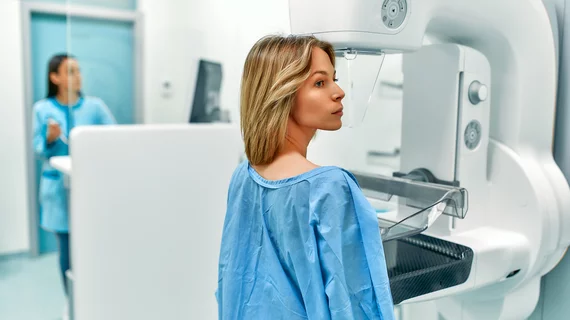Patient self-scheduling significantly increases mammography completion rates
Allowing patients to self-schedule their screening appointments significantly increases their mammography completion rate, according to new research.
Numerous studies have proven breast imaging’s ability to save lives. However, screening adherence rates remain low at around 70%, with marked variation among different patient populations, experts detailed in the American Journal of Preventive Medicine [1].
The University of Pennsylvania recently sought to address this challenge, letting patients schedule their own mammography exams via the electronic health record. Its practice change is proving fruitful, with self-scheduling producing a 13.2 percentage point increase in the completion rate for patients with an active portal account.
“These findings lend support for interventions or programs that use the EHR and self-scheduling to reduce barriers to scheduling mammogram screenings,” lead author Kimberly J. Waddell, PhD, with Penn’s Center for Health Incentives and Behavioral Economics, and colleagues wrote Dec. 11. “Low-cost, EHR self-scheduling functions are a promising method for increasing preventive cancer screening rates that could ultimately result in earlier detection and treatment of certain cancers.”
The retrospective study spanned a total of five years from 2014 to 2019, including pre- (2014 to 2016) and post-intervention periods (2016 to 2019). Altogether, the analysis covered 35,257 patient visits. The health system first started implementing the new scheduling option in May 2016, requiring a clinician order to schedule a mammogram appointment (patients were not permitted to self-refer). Once a primary care doc placed an order, a scheduling ticket was automatically placed and individuals received an email message to select an appointment slot via the portal. Prior to implementation, patients typically phoned during regular business hours to schedule their screening.
Penn saw an overall mammogram completion rate before the intervention at 22.2%, which leapt to 49.7% after the practice change. EHR self-scheduling was significantly associated with increased mammogram completion among those with an active portal account, relative to those who were inactive at the time (with an adjusted difference of 13.2 percentage points). Meanwhile, for patients who received a clinician mammogram order at their eligible visit, self-scheduling was significantly associated with increased imaging completion for patients with an active portal account (14.7 percentage points).
“Prior interventions that did not use the EHR included mailing information, telephone or computer-based instructions, educational materials, or health worker support. These resource requirements may limit scalability and long-term implementation,” Waddell and co-authors noted. “In contrast, the self-scheduling function was scaled across an entire health system over a short period of time and did not require additional staffing resources, making it durable over time. The reach of this intervention will likely continue to increase as the number of patients actively using EHR patient portals continues to rise.”
Read more about the study results, including potential limitations, at the link below.

